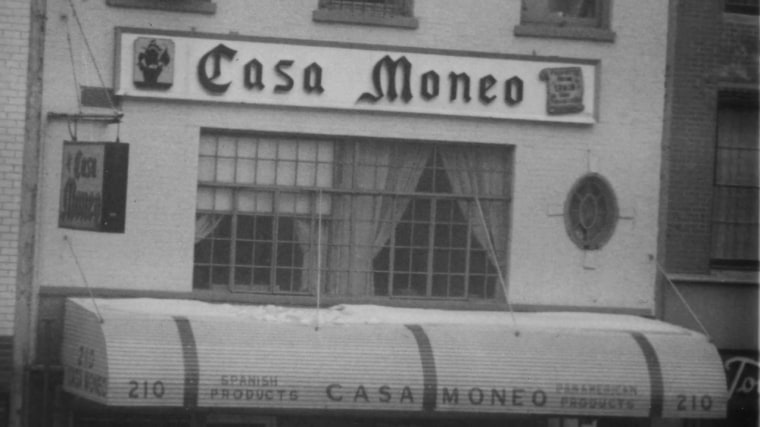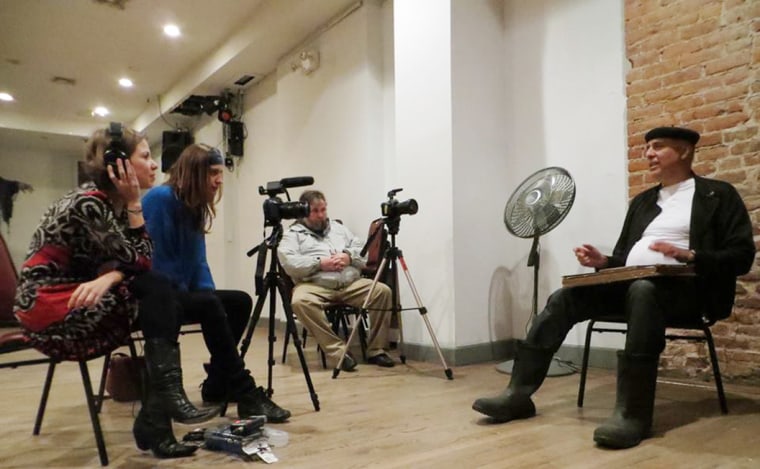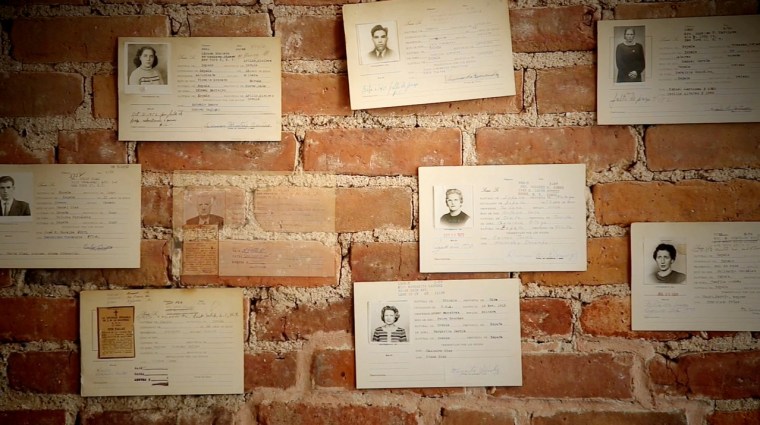"I was born in 1868 in a secluded corner of the Lower East Side,” narrates Spanish-American lawyer Robert Sanfiz in a documentary trailer about the oldest Spanish immigrant club in New York today, La Nacional-Spanish Benevolent Society. “But I have spent almost a century of my life anchored on Manhattan’s 14th Street.”
The story of a centuries-old club founded by Spaniards that is still a thriving cultural center and a remnant of what used to be called "Little Spain" in downtown Manhattan is really a much wider story about the first generations of Latinos - Spaniards, Puerto Ricans, Cubans and other Latin Americans - who came together in an effort to build a community in New York City.
The documentary “Sole Survivor-Única Superviviente," slated to be released in 2016 and currently in a crowdfunding campaign, aims to reconnect the descendants of this community with the much larger history of New York. For example, La Nacional’s building, located at 239 West 14th Street, is directly linked with one of the city’s most influential Latino publishers.
The brownstone's ownership was transferred to pioneering Spanish-language newspaper publisher José Camprubí in 1924. Just six years earlier, Camprubí, who was also the brother-in-law of the future Nobel laureate poet Juan Ramón Jiménez, had bought "La Prensa"—New York’s oldest Spanish language newspaper, part of "El Diario" today. As the publisher, he called on all Spanish speakers to come together like a “family”.
Camprubí, who was born in Puerto Rico to Spanish parents - envisioned a club building run by and for immigrants to support members with housing, work and healthcare. And he used "La Prensa" to lobby different Latino organizations to unite into one strong federation. The Unión Benéfica Española (The Spanish Charitable Union), founded in 1914, was a precursor to La Nacional. And its mission was the same—to build a home for all “hispanos”.
“We need to document the stories of those people who lived the golden age of our club before they are not with us anymore,” says La Nacional's executive director.
“In this house,” Camprubí wrote in a 1920 editorial referring to the Charitable Union, “we can show what our race [all those who identified with Hispanic culture] is worth… We can become something and stop being what we are today: nothing.”
Similarly, Sanfiz, who helped save La Nacional from closing in 2007 and is now the executive director of the club, sees the building as a sanctuary for Hispanic culture. These days the non-profit center is a hub for cultural activities such as classes, events and lectures on the arts, Spanish cuisine and more.
Yet Sanfiz explained in an interview with NBC News that Camprubí’s spirit of unity is embedded in the DNA of the building—attracting over 7,000 members during the club’s golden age in the 1950s. And when you walk up the narrow wood staircase to the membership office today, it is easy to imagine the voices of those older immigrants.

“People talk truths about me, but also myths and legends,” Sanfiz says in the voiceover of the trailer, referring to the building. “People say that Lorca and Dalí stayed here. And Sorolla slept within these walls - he left me a gift, one of his paintings,” he narrates.
Even though acclaimed Spanish painters like Joaquín Sorolla and Salvador Dalí exhibited their art in New York and the playwright Federico García Lorca attended Columbia University, there is no documentation connecting them with La Nacional. But for Celia Novis, director of “Sole Survivor”, the rumors of these famous Spaniards lingered over the club like ghosts, and motivated her to tell a deeper story about this forgotten community.

Novis explained in an interview with NBC News that the club is like an archaeological site where you can find a lot of relics. “When I first came here, I saw pictures - membership cards - but no one really knew the full story," she said. "And the mystery behind this place [La Nacional] - all those people we talk about, whose names sometimes we don’t remember, but are still part of the club -inspired me to make it [the documentary].”
This primordial need to remember and be remembered is the driving force behind the making of the film. And for Sanfiz, like other Americans who are digging up their immigrant roots, the urge to preserve and recover the club’s history has become a race against time. “We need to document the stories of those people who lived the golden age of our club before they are not with us anymore,” he said.
This is the first time that La Nacional is officially collaborating in a documentary about its history, said Sanfiz. For many Latinos, this story will be familiar because it describes the tensions that influence their identity as immigrants and descendants of immigrants.
As younger generations of Mexicans, Ecuadorians, Colombians, Dominicans and other Spanish-speaking immigrants redefine cities like New York, the "voices" of those like José Camprubí’s pose important questions. What will our legacy be? Can we come together as a community, or will we be forgotten in the dusty pages of a library book?
The crowdfunding campaign for “Sole Survivor” ends August 21.
